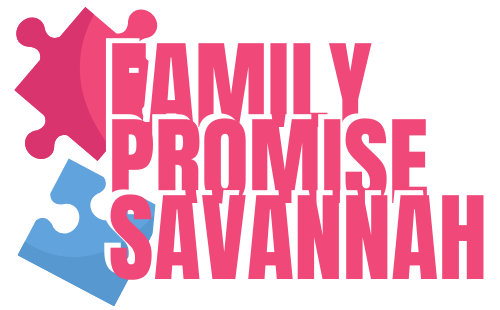In today’s digital landscape, creating a visually appealing and user-friendly website is crucial for businesses and individuals alike. To achieve this, having the right web design tool is essential. With a myriad of options available, selecting the best web design tool for your project can be a daunting task. This comprehensive guide aims to provide you with the necessary insights to make an informed decision and choose the perfect web design tool for your needs.
Conception Web Design Tools
Web design tools are software applications that facilitate the creation and development of websites. These tools offer a wide range of features, including graphic design capabilities, wireframing, prototyping, and code generation. They play a vital role in streamlining the web design process, enhancing productivity, and ensuring high-quality outcomes.
Types of Web Design Tools
Web design tools can be categorized into different types based on their primary functionalities. Some common types include:
1. Graphic Design Tools: These tools focus on creating visual elements such as images, logos, and illustrations. They enable designers to enhance the aesthetic appeal of websites.
2. Wireframing and Prototyping Tools: Wireframing tools help in creating skeletal layouts of web pages, showcasing the basic structure and functionality. Prototyping tools allow designers to create interactive prototypes to test and validate their design concepts.
3. Code Editors: These tools provide a platform for writing and editing HTML, CSS, and JavaScript code. They offer features like syntax highlighting, auto-completion, and debugging, making coding more efficient.
Importance of Choosing the Right Tool
Selecting the right web design tool is crucial for the success of your project. Here are a few reasons why it’s important:
1. Efficiency and Productivity: The right tool can significantly improve your workflow and productivity. It should have a user-friendly interface and a comprehensive set of features that align with your project requirements.
2. Consistency and Professionalism: A suitable web design tool ensures consistency across your website’s design elements, resulting in a more professional and polished appearance.
3. Collaboration: If you’re working in a team, choosing a tool that supports collaboration features is essential. It allows team members to work simultaneously, share feedback, and maintain version control.
4. Future Scalability: Consider the scalability of the tool. Will it accommodate your future needs as your project grows? Choosing a tool that can handle increased complexity and functionality is crucial for long-term success.
5. Budget Considerations: Web design tools come with various pricing models. Consider your budget and choose a tool that provides the best value for your money.
Factors to Consider
When selecting a web design tool, several factors should be taken into account. These factors will ensure that the chosen tool aligns with your project requirements and helps you achieve your desired outcomes. Here are the key factors to consider:
· Project Requirements
Understand the specific needs of your project. Consider the complexity, type of website, and the desired design elements. This will help you narrow down your options and choose a tool that caters to your requirements.
· Skill Level
Evaluate your own skill level and the skills of your team members. Some tools are more beginner-friendly, while others require advanced technical knowledge. Select a tool that matches your skill level to maximize efficiency.
· Scalability
Consider the future growth and scalability of your project. Will the tool be able to handle expanding functionality and evolving design requirements? Choosing a tool with scalability in mind will save you time and effort down the road.
· Budget
Set a budget for your web design tool. While some tools may have a higher upfront cost, they may provide long-term value and a better return on investment. Evaluate the pricing models and choose a tool that fits your budget without compromising quality.
Popular Web Design Tools
To help you navigate the vast landscape of web design tools, here are a few popular options worth considering:
- Adobe Photoshop – Adobe Photoshop is a powerful graphic design tool widely used in the industry. It offers a comprehensive set of features for creating and editing images, illustrations, and website mockups. Photoshop provides extensive customization options and allows designers to create pixel-perfect designs.
- Sketch – Sketch is a vector-based design tool popular among Mac users. It provides an intuitive interface and a wide range of features for designing interfaces and user experiences. Sketch’s focus on collaboration and prototyping makes it a preferred choice for many web designers.
- Figma – Figma is a cloud-based design tool that offers real-time collaboration features. It allows multiple designers to work simultaneously on a project, making it an excellent choice for teams. Figma’s versatility and cross-platform compatibility make it a popular tool in the design community.
- Adobe XD – Adobe XD is a user experience design tool that enables designers to create interactive prototypes and wireframes. It offers seamless integration with other Adobe products and provides an efficient workflow for designing and sharing website concepts.
Comparative Analysis
To make an informed decision, it’s crucial to compare different web design tools based on various parameters. Consider the following aspects when conducting a comparative analysis:
- Features and Functionality – Evaluate the features and functionalities offered by each tool. Look for capabilities like layer management, image editing, typography options, asset libraries, and responsive design support.
- Learning Curve – Consider the learning curve associated with each tool. Some tools may require extensive training and technical knowledge, while others may be more user-friendly and intuitive.
- Collaboration – If you’re working in a team or collaborating with clients, examine the collaboration features provided by each tool. Look for features like real-time editing, commenting, version control, and file-sharing options.
- Integrations – Check if the tool integrates with other software and services that you use regularly. Integration with project management tools, code repositories, and design asset libraries can significantly enhance your workflow.
Making the Right Choice
Choosing the right web design tool is a subjective decision based on your project requirements and personal preferences. Consider the factors discussed earlier, conduct thorough research, and try out different tools through free trials or demos. Assess their compatibility with your workflow and choose the tool that best aligns with your needs.


Leave a Reply